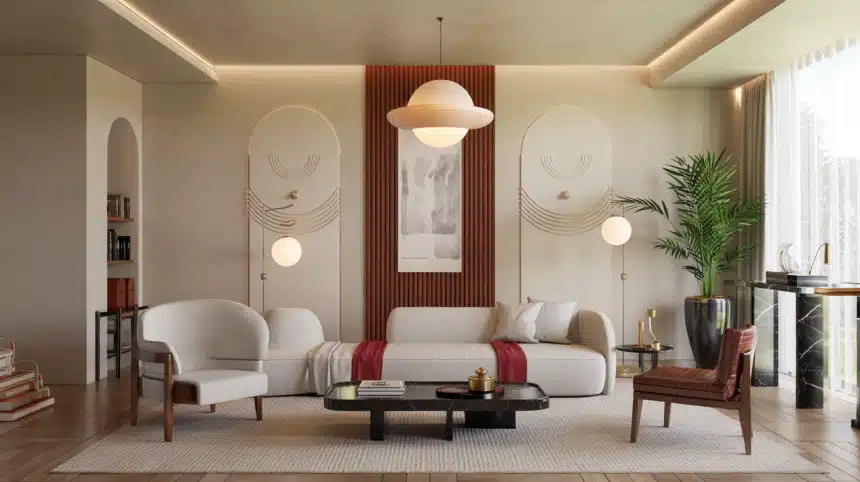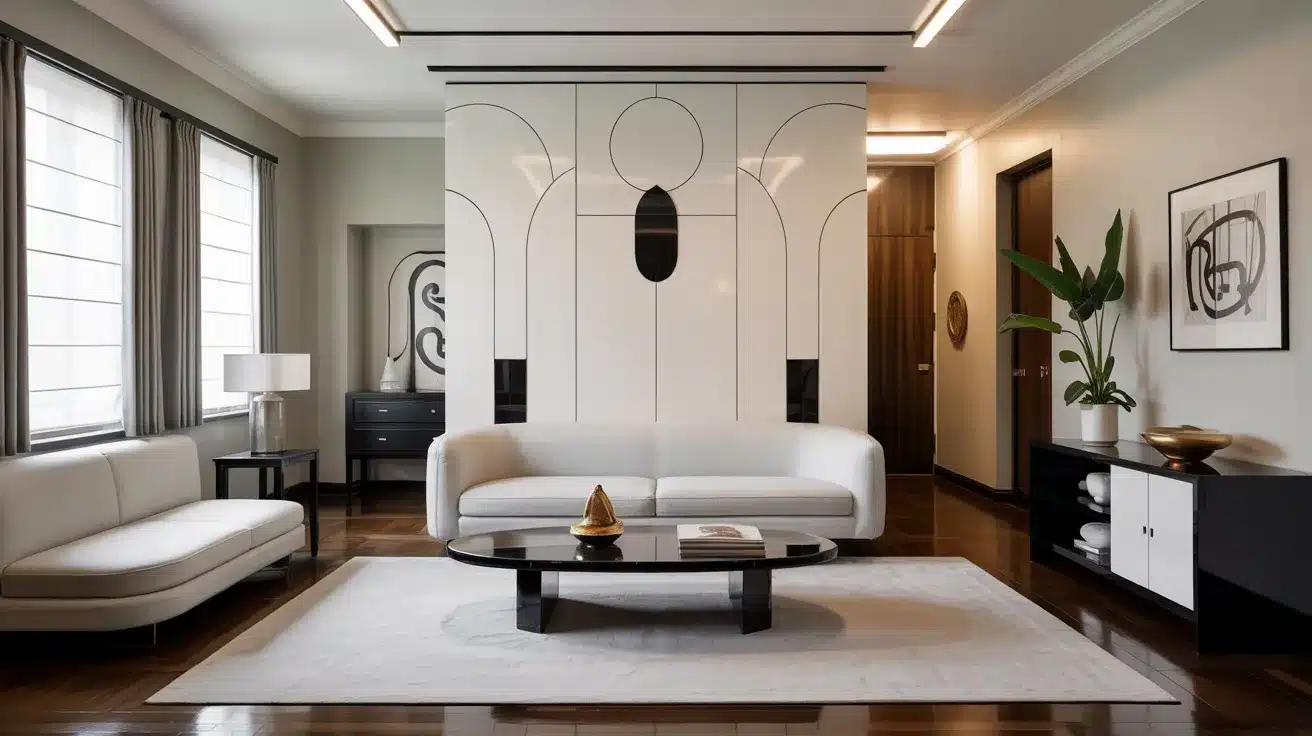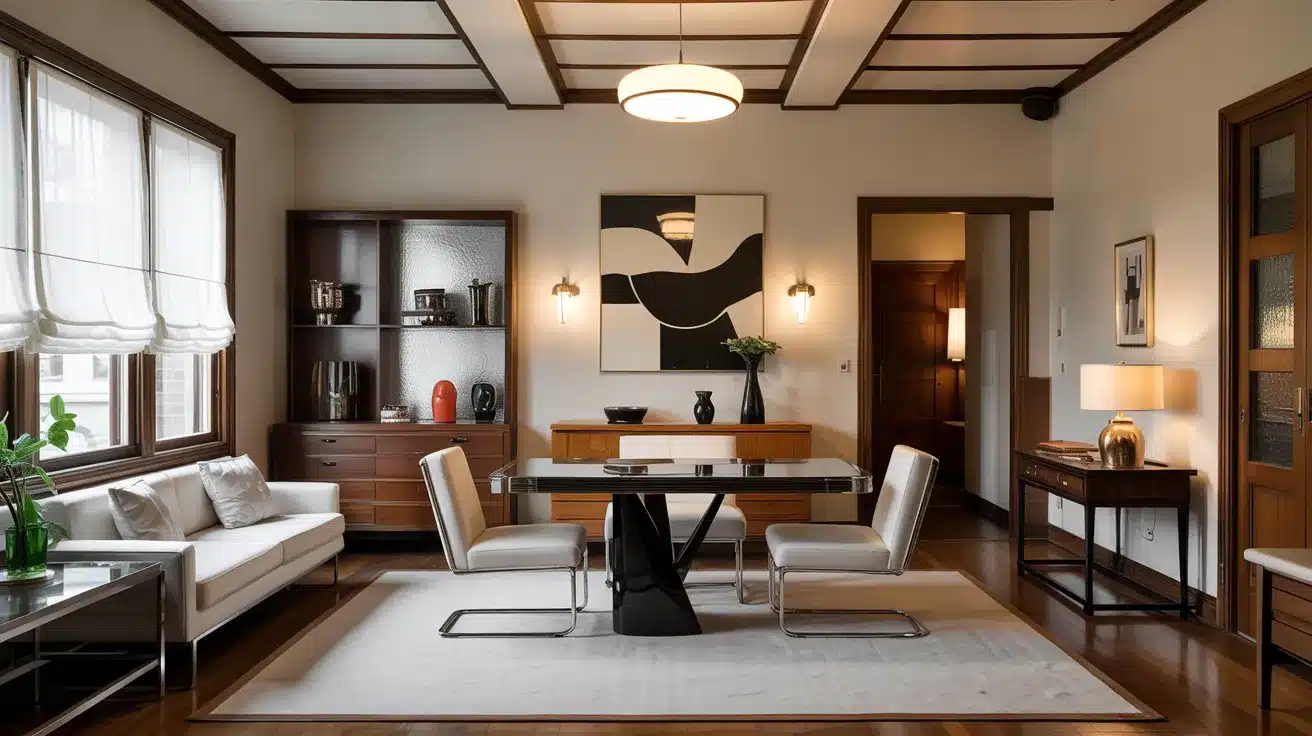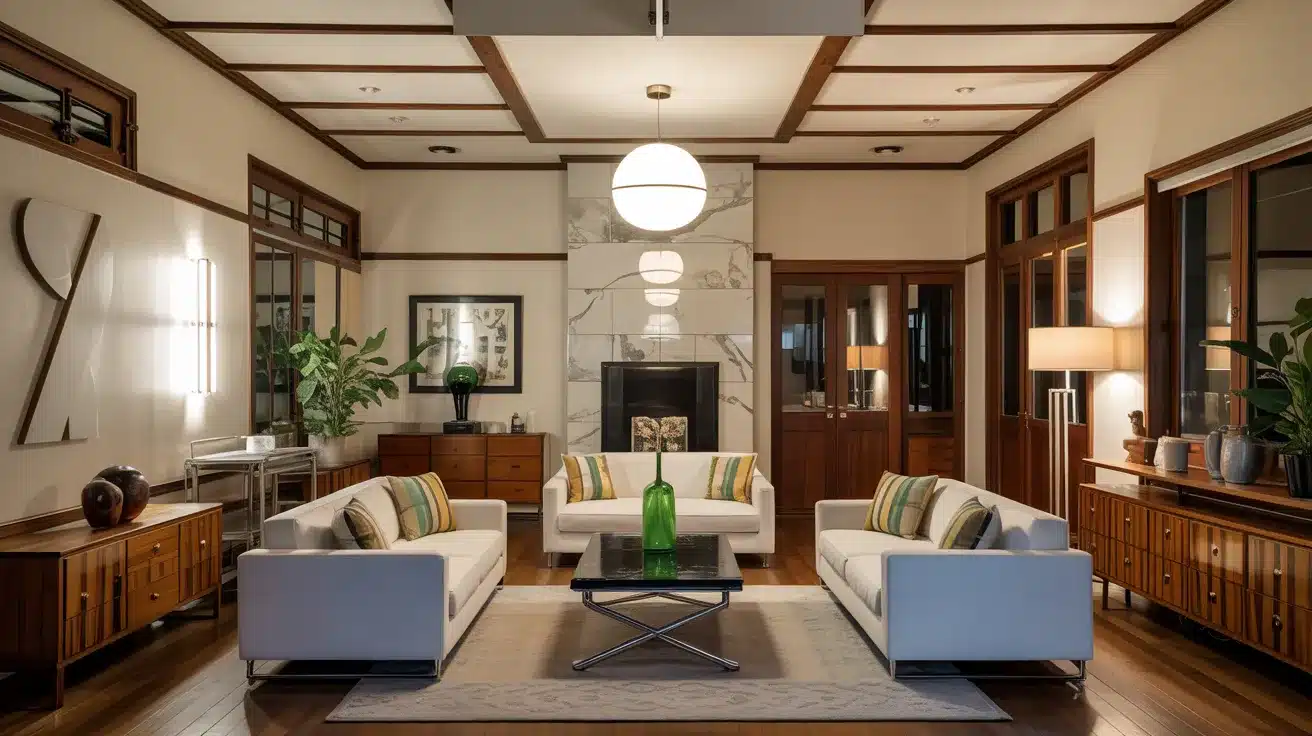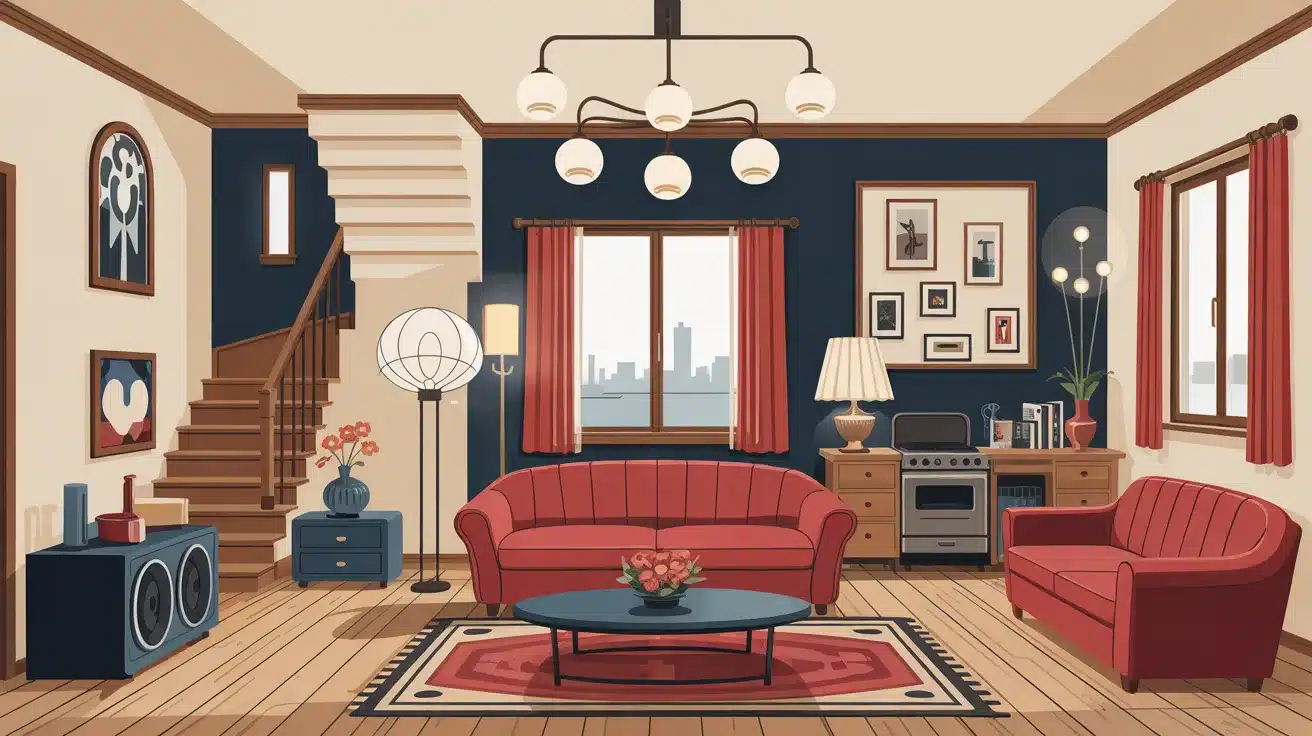Are you tired of busy spaces filled with too many things? Homes today often have too much stuff and not enough style. Finding a look that stays fresh year after year can feel hard.
Art Moderne offers a fix for these common issues. This style brings clean lines, smooth curves, and a mix of old and new that works in today’s homes. You’ll learn how to make rooms feel open, pick the right colors, and choose items that look good and work well.
In this guide, we’ll walk through the roots of Art Moderne, show its main parts, and give tips you can use right now. You’ll see how this style from the 1930s and 40s still makes sense today. Let’s look at how simple shapes and smart design can make your home better.
The Origins of Art Moderne: From the 1930s to Today
Art Moderne came to life in the 1930s and 1940s. It emerged as a direct response to the more extravagant Art Deco style that preceded it. People wanted something new after the Great Depression. They looked for clean lines and basic forms instead of fancy extras.
The style took its cues from new factory methods and tools. Cars, planes, and ships shaped how homes looked inside. Smooth curves and simple shapes became more common. Metal, glass, and new types of plastic found their way into homes.
Art Moderne reflects the optimism of the time, conveying a sense of hope for the future. The style mixed good looks with useful items. Chairs, lamps, and tables all worked well, but still looked nice. This mix of form and function sets the style apart from others. Homes became less packed with stuff and more open.
This style helped change how we think about our living spaces. The focus on making things work well still matters today. Many items in modern homes can be traced back to this era. The shift from show to use was a big step in design.
Characteristics of Art Moderne Interior Design
The distinctive characteristics of Art Moderne interior design include sleek, streamlined lines, the use of modern materials like chrome, glass, and lacquer, and an emphasis on functional grace.
1. Sleek and Simple Lines
Art Moderne places clean shapes at the forefront. The style moves away from extra details and focuses on basic forms. You’ll see smooth curves on furniture edges and walls. Sharp angles give way to soft bends and turns.
The style uses circles, ovals, and straight lines in new ways. This focus on basics makes rooms feel calm and open. Light flows better in these spaces, and the eye can rest.
2. Streamlined Forms
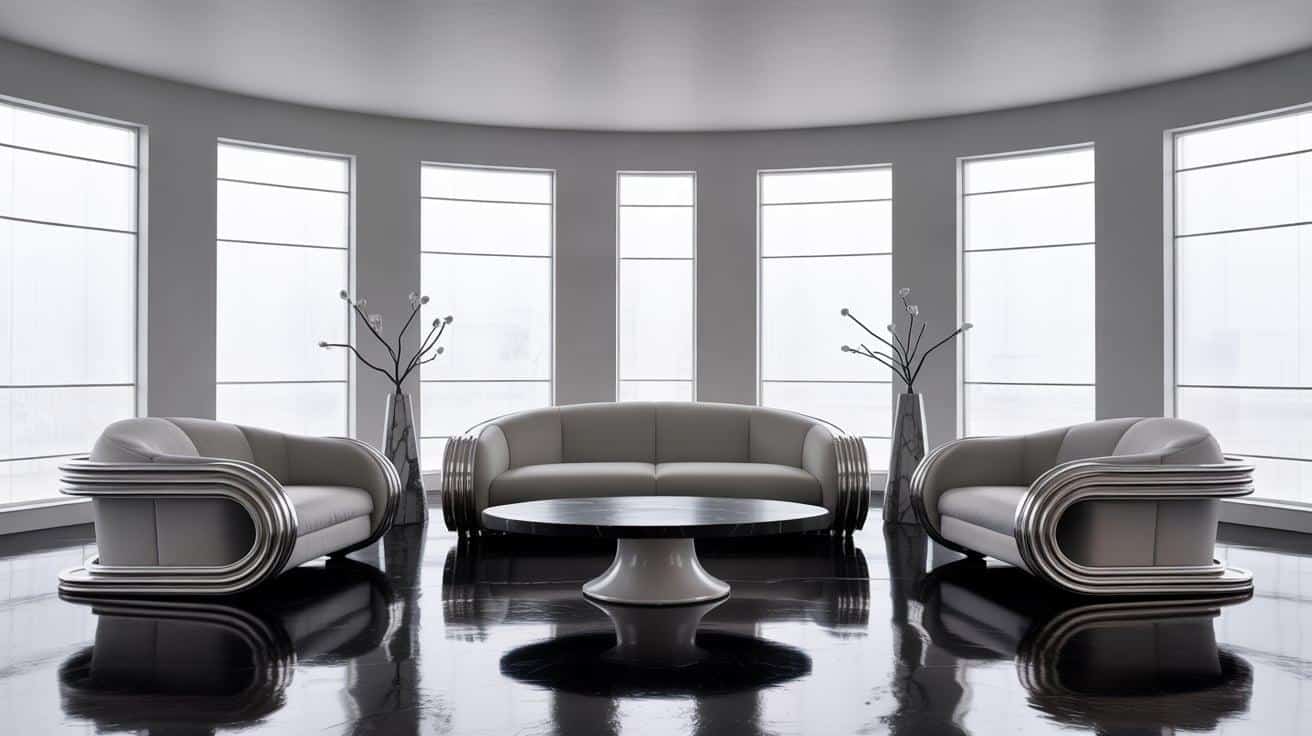
Cars and planes shaped the look of Art Moderne. The smooth flow of a fast car inspired home items. Chairs with long, flowing arms copy the shape of moving things. Tables have bases that taper down like an upside-down drop of water.
Sofas curve at the ends like the back of a racing car. These smooth shapes make rooms feel like they move even when still. The entire style conveys a sense of speed and the future.
3. Luxury in Functionality
Art Moderne finds beauty in the way things function. A chair isn’t just pretty—it fits the body well. A lamp looks good, but also puts light where you need it. This mix of looks and use is key to the style. Fine woods pair with metal parts that do real jobs.
Glass tops let you see the frame of a table while still being useful. This mix of fancy and handy makes the style stand out.
4. Modern Materials
New stuff made Art Moderne what it is. Chrome rails and legs shine brightly under the lights. Glass is featured in the tops, doors, and walls. Aluminum frames furniture and trim walls. Shiny lacquer coats wood surfaces.
New plastics formed shapes that wood couldn’t. These items once seemed futuristic. They let makers form new shapes not seen before—the mix of old and new made homes feel fresh.
5. Muted Color Palette with Bold Accents
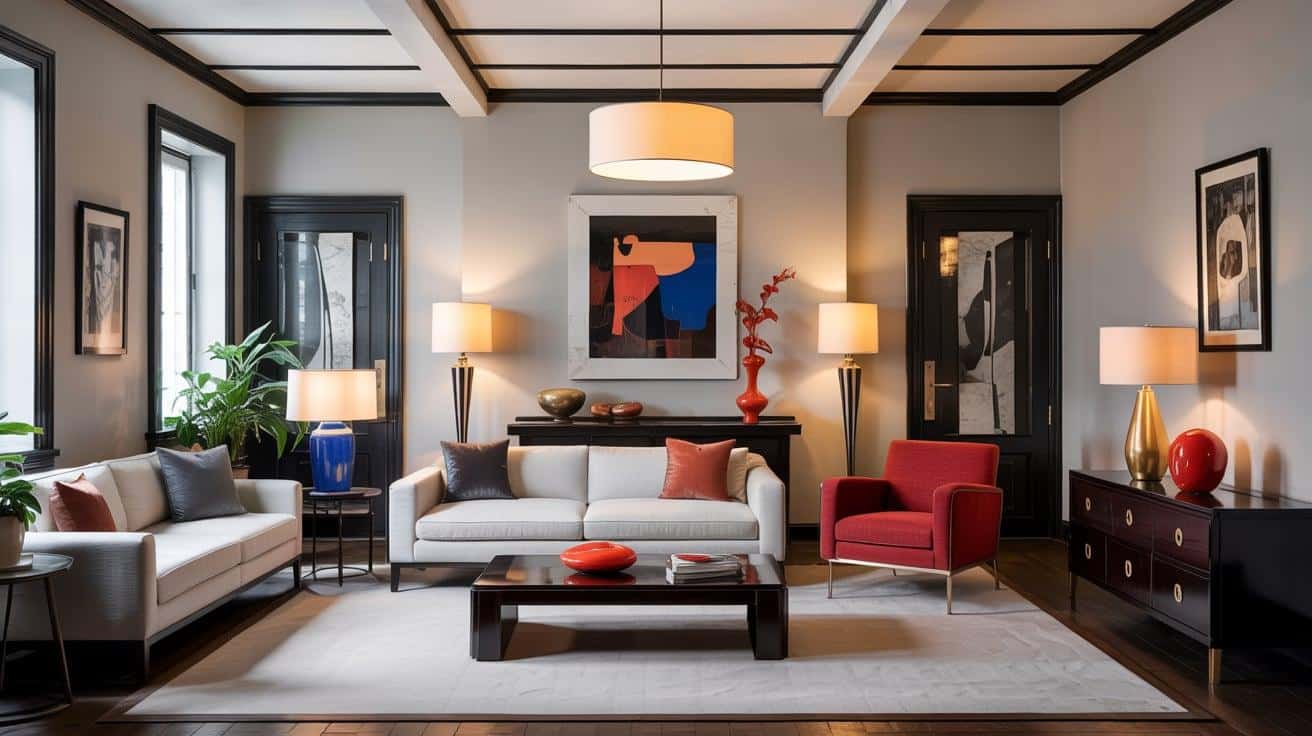
Art Moderne rooms start with quiet colors. Walls in pale gray, cream, or soft tan set the stage. Floors in stone or light wood keep things simple. Furniture often comes in black, white, or brown. Then come the bright spots: a red chair, blue vase, or gold lamp.
These bits of color stand out even more against the plain room. The effect is like a good photo—the eye knows where to look.
Bringing Art Moderne Into Your Home: Practical Tips
- Designing the Space: Start with open floor plans that let light flow through rooms and focus on clean wall lines without busy trim work.
- Color Scheme: Paint walls in soft grays or creams, use black for trim, then add small pops of red, blue, or yellow in select items.
- Furniture and Layout: Choose rounded sofas, low coffee tables with metal legs, and place furniture away from walls to create breathing room.
- Lighting: Install simple globe pendants, wall sconces with metal backplates, or floor lamps with slim bases and plain shades.
- Décor and Accessories: Add round mirrors, simple glass vases, clock faces with clean numbers, and abstract prints in basic black frames.
How Art Moderne Adopts Technology and Innovation
Art Moderne emerged in response to the rise of factory-made items for homes. Machines could now make items once built by hand. This shift enabled more people to acquire stylish tables, chairs, and lamps.
Homes began to look more alike as the same items showed up in many places. The style took this sameness and made it a plus. New types of lights changed how rooms felt. Bulbs were tucked into walls and ceilings. Glass tubes were bent into shapes to create signs and art.
Stoves, fridges, and radios got smooth cases with rounded corners. These items stood out less and blended well with the room’s flow. New uses for metal, glass, and wood changed how they looked. The smooth look of fast cars and boats shaped Art Moderne.
Round corners on walls copied the curve of a ship’s hull. Long, low sofas matched the profile of a fast car. Stairs with metal rails looked like the steps up to a plane. The style drew inspiration from moving elements and incorporated them into still-life settings.
Art Moderne Interior Design: The Fundamental Elements
| Element | Description |
|---|---|
| Furniture and Upholstery | Clean-lined, sculptural furniture with rounded edges, often lacquered or metal-clad for a sleek look. |
| Lighting | Unique, futuristic fixtures with geometric forms, such as pendant lights, sconces, and neon-inspired designs. |
| Walls and Flooring | Luxurious materials like marble, polished wood, or terrazzo; wallpapers with geometric or abstract patterns. |
| Décor and Accessories | Functional yet decorative objects like abstract sculptures, sleek mirrors, and streamlined clocks. |
| Art and Color | Minimalist art pieces and wall hangings, abstract and geometric patterns that align with the clean, modern aesthetic. |
Conclusion
Art Moderne style brings together simple shapes and useful design. This blend of form and function remains relevant in homes today. The clean lines and open spaces help create calm rooms where people want to spend time.
The style shows us that good design doesn’t need to be complex. A few well-chosen pieces can work better than many items. Neutral colors with small bright spots create balance. Metal, glass, and wood combine to make spaces that feel both new and timeless.
You can start small with Art Moderne ideas. Try a round mirror, a lamp with a simple shade, or a low table with metal legs. These touches can subtly alter the ambiance of a room without requiring a complete overhaul.
What’s next? Look at your own space with fresh eyes. Which items could you replace with simpler versions? Where might a touch of bright color make a difference? The best rooms strike a balance between style and comfort, tailored to your lifestyle.
Would you try Art Moderne ideas in your home? Share your thoughts about which parts of this style speak to you most.
Frequently Asked Questions
Is Art Moderne Suitable for Small Apartments?
Yes, its focus on clean lines and open spaces makes small rooms appear larger and more organized.
How Much Should I Budget for an Art Moderne Makeover?
Start with $500-$1000 for key pieces like a statement lamp, a rounded coffee table, and simple art prints.
Can Art Moderne Work with Existing Traditional Furniture?
Mix in Art Moderne by keeping traditional wood pieces and adding simple metal accents and plain textiles.
Is Art Moderne Child-Friendly?
It works well for families, thanks to its rounded corners and sturdy materials, which stand up to daily use.

